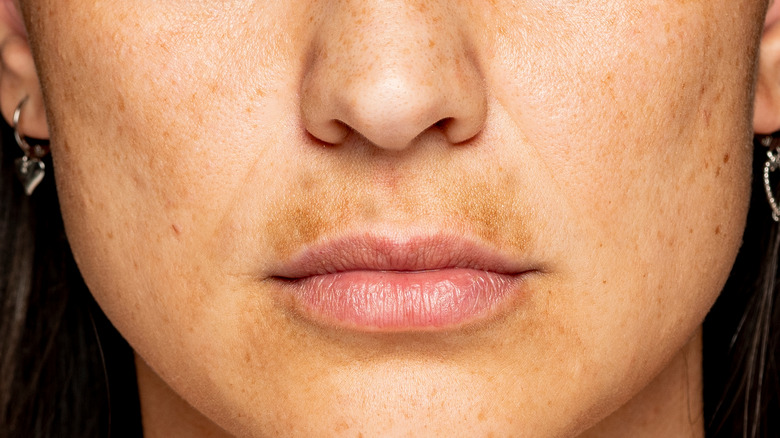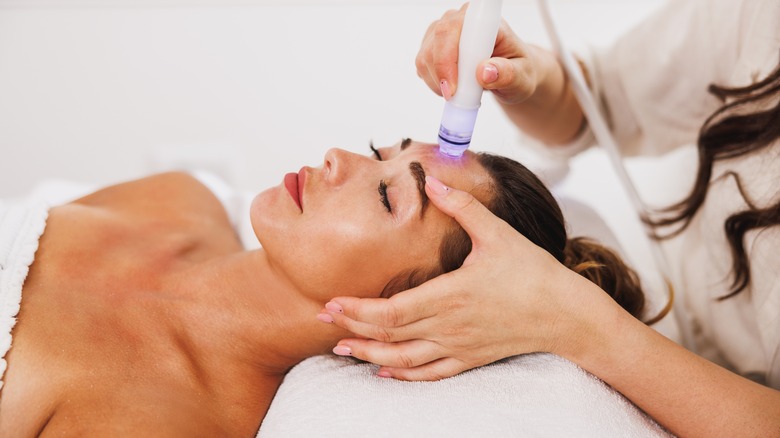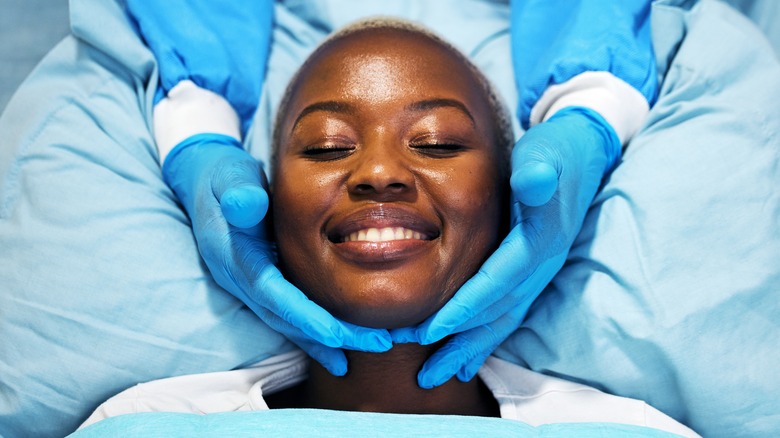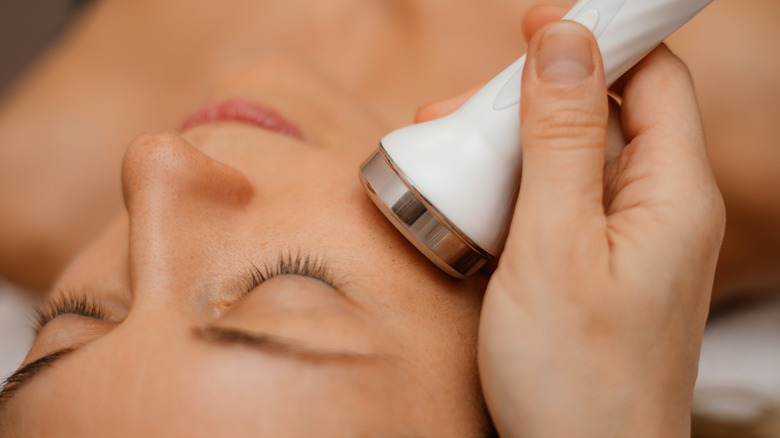Treatments To Try To Clear Up Skin Discoloration
Curating a skincare routine that's perfect for you is no easy task. We're already faced with a number of skin conditions that develop over time, like skin discoloration. According to Healthline, skin discoloration refers to any change in your natural skin tone that develops over time. There are a number of causes that may bring discoloration to the surface, including birthmarks, skin infections, and chronic conditions.
While skin discoloration is a broad term that encapsulates a number of conditions, there are a few natural remedies that have been proven to work well on discolored skin — for example, castor oil can help skin discoloration. If the severity of skin discoloration is high, however, there are a few treatments that can help reduce the appearance of spots while addressing common skin concerns. If you're someone who struggles with skin discoloration (and, as a result, other conditions like photosensitivity), fear not. There's a treatment for you.
Hydrafacial to remove build up
The first and most popular treatment when it comes to skin discoloration is a hydrafacial. Hydrafacials work to address common skin concerns, from breakouts to glowy skin. As licensed skincare expert Merry Thornton shared with The Zoe Report, "The Hydrafacial uses a patented vortex wand to suction oil, dirt, and buildup out of the pores and infuse hydration and moisture back into the skin," emphasizing its ability to reach beneath the surface and target concerns.
Beyond that, hydrafacials can be done with blue light therapy to penetrate the skin and kill any acne-causing bacteria. Blue light therapy's ability to spot-treat specific concerns is also an effective way to identify and remove discolored spots, using active ingredients like salicylic acid to concentrate on individual spots. Hydrafacials are also some of the more inexpensive treatments to address discoloration, ranging anywhere from $150-$300 depending on individual skin needs.
Chemical peel for spot treatments
If a hydrafacial isn't strong enough for your skin, a chemical peel may be the next best option. Per Healthline, chemical peels use high-concentration acids to treat each discolored spot and remove any hyperpigmentation. In order to receive the full chemical peel treatment, the top layer of the skin must be removed while penetrating into the middle layer of skin. Removing the top layer of skin (also known as the epidermis) will allow patients with skin discoloration and hyperpigmentation to achieve the best results.
Since the treatment is quite severe, however, there are a few side effects. Some of these include redness, irritation, and blistering. If you're someone who spends a lot of time in the sun (hopefully not without sunscreen), receiving a chemical peel can be damaging to your already sensitive skin. It's believed that chemical peels work better for fair-toned skin, whereas deeper-toned skin will benefit from a laser.
Laser peel to remove targeted spot
Laser peels are another great option for skin discoloration, especially for those of us with darker skin. According to Verywell Health, melanin-producing cells (also known as melanocytes) face less damage during laser peels. Laser peels are traditionally done in two ways: ablative and non-ablative. Ablative lasers are more intense and reserved for a higher severity of skin concerns. Much like a chemical peel, the laser removes the epidermis and ensures that skin cells grow back healthier.
Non-ablative lasers, however, target the skin tissue to promote collagen growth. Per AmanDean, collagen has been proven to reduce the appearance of skin discoloration by using its anti-aging amino acids like glycine to hydrate the skin and target any impurities. While this is the most costly and intense of treatments for skin discoloration, the results are well worth it for anyone struggling with hyper-pigmentation and other forms of discoloration.



